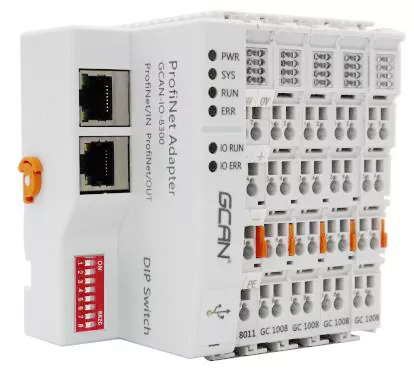PLC(프로그래머블 로직 컨트롤러)는 자동화 제어 시스템에서 널리 사용되는 장치로, 산업 분야의 다양한 프로세스를 제어하고 모니터링하는 핵심 구성 요소입니다. PLC 프로그래밍의 기본 제어 명령어를 이해하는 것은 초보자에게 매우 중요합니다. 이 문서에서는 초보자가 빠르게 시작할 수 있도록 PLC의 기본 제어 명령어에 대해 소개합니다.
I. 일반적인 기본 제어 지침
출력 지침:
출력 명령은 PLC 출력 모듈을 제어하고 외부 장치로 신호를 보내는 데 사용됩니다. 일반적인 출력 명령어에는 다음이 포함됩니다:
OTE(출력 에너자이즈): 지정된 출력 포인트를 상위 레벨 상태로 설정합니다. 예를 들어 OTE Y0은 출력 포인트 Y0을 상위 레벨 상태로 설정합니다.
OTL(출력 래치): 리셋 명령이 실행될 때까지 지정된 출력 포인트를 상위 레벨 상태로 잠급니다. 예를 들어, OTL Y1은 출력 포인트 Y1을 상위 레벨 상태로 잠급니다.
OTU(출력 언래치): 지정된 출력 포인트의 잠금을 해제하여 낮은 레벨 상태로 되돌립니다. 예를 들어 OTU Y2는 출력 포인트 Y2의 잠금을 해제하고 로우레벨 상태로 되돌립니다.
입력 지침:
입력 명령은 외부 장치의 상태를 읽고 결과를 PLC의 내부 메모리로 전달하는 데 사용됩니다. 일반적인 입력 명령은 다음과 같습니다:
I(입력): 지정된 입력 포인트의 상태를 읽습니다. 예를 들어 I1은 입력 포인트 I1의 상태를 읽습니다.
XIC(닫힌 경우 검사): 지정된 입력 지점이 닫히면 참이 됩니다. 예를 들어, 입력점 I2가 닫히면 XIC I2는 참이 됩니다.
XIO(열려 있는지 검사): 지정된 입력 지점이 열려 있으면 참이 됩니다. 예를 들어, 입력점 I3이 열려 있으면 XIO I3이 참입니다.
상태 제어 지침:
상태 제어 명령어는 PLC의 실행 상태와 프로그램의 실행 순서를 제어하는 데 사용됩니다. 일반적인 상태 제어 명령어에는 다음이 포함됩니다:
JMP(점프): 지정된 프로그램 주소로 무조건 점프합니다. 예를 들어, JMP 100은 프로그램 주소 100으로 점프합니다.
LBL(레이블): 점프 명령에 사용할 프로그램 주소 레이블을 정의합니다. 예를 들어, LBL 100은 프로그램 주소 레이블(100)을 정의합니다.
END(끝): 프로그램의 종료 지점을 나타냅니다. 예를 들어 END는 프로그램의 끝을 나타냅니다.
계산 지침:
계산 명령어는 데이터에 수학적 또는 논리적 연산을 수행하는 데 사용됩니다. 일반적인 계산 명령에는 다음이 포함됩니다:
ADD(추가): 두 숫자를 더하고 그 결과를 지정된 대상 레지스터에 저장합니다. 예를 들어 ADD K1 D100은 레지스터 K1과 D100에 있는 숫자를 더하고 그 결과를 대상 레지스터에 저장합니다.
SUB(빼기): 첫 번째 숫자에서 두 번째 숫자를 빼고 그 결과를 지정된 대상 레지스터에 저장합니다. 예를 들어 SUB K2 D200은 D200에서 레지스터 K2의 숫자를 빼고 그 결과를 대상 레지스터에 저장합니다.
AND(논리적 AND): 두 논리 값에 대해 논리 AND 연산을 수행하고 그 결과를 대상 레지스터에 저장합니다. 예를 들어 AND K3 D300은 레지스터 K3과 D300에 논리 AND 연산을 수행하여 그 결과를 대상 레지스터에 저장합니다.


II. PLC 프로그램 작성을 위한 기본 단계
시스템 요구 사항을 결정합니다: 제어할 장치와 시스템의 작동 로직을 이해합니다. 입력 및 출력 신호의 유형과 수량을 명확히 파악합니다.
프로그램 만들기: PLC 프로그래밍 소프트웨어에서 새 프로그램을 생성하고 이름을 지정합니다.
논리 작성: 시스템 요구 사항에 따라 기본 제어 지침을 사용하여 로직을 작성합니다. 제어 명령어를 결합하고 중첩하여 원하는 제어 로직을 구현합니다.
프로그램 디버그: 로직을 작성한 후 프로그램을 디버그하고 테스트합니다. 로직이 예상대로 작동하는지 확인하고 필요한 조정 및 최적화를 수행합니다.
프로그램 다운로드: 작성된 프로그램을 PLC 장치에 다운로드하여 제어 로직을 실행할 수 있도록 합니다.
모니터링 및 유지 관리: PLC 프로그램이 실행되는 동안 장치의 상태와 작동을 모니터링하세요. 필요한 경우 시스템의 안정적인 작동을 위해 조정 및 최적화를 수행합니다.
PLC 프로그래밍의 기본 제어 명령어를 이해하는 것은 PLC 프로그래밍의 실질적인 기초를 형성합니다. 이 기사에서는 PLC 프로그램 작성을 위한 기본 단계와 함께 일반적인 출력, 입력, 상태 제어 및 계산 명령어를 소개했습니다. 이러한 기본 사항을 배우고 숙달하면 초보자도 PLC 프로그래밍의 세계를 더 깊이 파고들어 더 복잡한 제어 및 자동화 작업을 수행할 수 있습니다.
찾고 계십니까? 다음 프로젝트를 위한 CAN 광섬유 게이트웨이 ? 자세히 알아보려면 클릭하세요!
